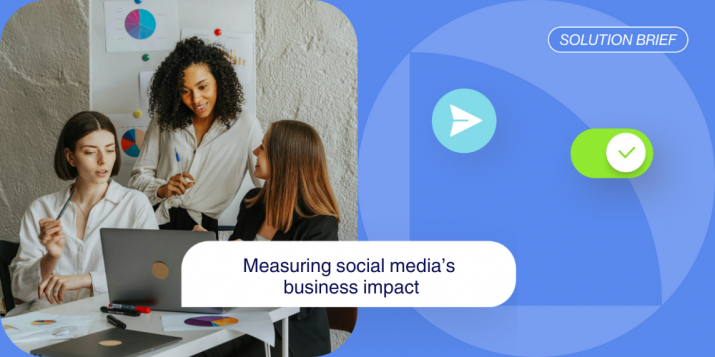
Launching an employee advocacy program: How to train employees in less than 2 weeks!
Most of your employees are already vocal about their company on social media. However, some of your employees are going to be new to the ‘social world’. These guys will definitely require more guidance, safety, and tools to boost up their confidence. In fact, 72% of employees have not received any type of social media training from their company.
From newbies to pros, you must align everyone’s skills to ensure they’re starting off on the same page. Investing in proper training will lead to higher employee retention and engagement. It will also enable you to grow a fruitful advocacy program that drives a positive return on investment.
So, where do you get started? You can check out the Employee Advocacy Launch Kit. Once your strategy is intact, you’re ready to train employees! This article covers the key elements necessary for a smooth onboarding experience in less than 2 weeks:
Day 1: Sell Employees on the Value of Advocacy
To start the employee advocacy program on the right foot, your employees should have a solid understanding of why the company encourages advocacy. Using presentations, videos or other engaging material explicitly highlights to employees the advantages.
How does advocacy lead to social amplification? How can it improve the buyer’s journey? How do advocates drive social engagement? What’s the ROI of advocacy in comparison to other marketing initiatives?
Next, it’s only fair that employees are aware of the benefits they could potentially gain. This includes both tangible rewards (gift cards, movie vouchers, food, etc.) and intangible rewards (thought leadership status, networking opportunities, personal brand development, HR recruiting, social selling etc.). Share personal stories of employees who shaped the company’s bottom-line.
Demonstrate the gamification aspect of advocacy – how does it pave the way for friendly competition. The more you reinforce the why the more you empower employees to become champions for your brand.
Day 2-3: A Tour of the Company’s Social Networks
The person managing the company’s official social media pages is perhaps most equipped to deliver this introduction. He or she should walk employees through the strategy tying your social media channels.
What is your social media goal? Who are your key audience and competitors? What do you commonly share on social media? Does your company use a unique hashtag?
Keep employees informed of these marketing activities and brand guidelines. Make sure employees are also following your company pages.
[Tweet “Launching an #EmployeeAdvocacy program? Train Employees in Less Than 2 Weeks! “]
Recommended for further reading
Day 4-7: Practical Social Media Skills
It’s easy to assume that everyone is familiar with social media. But that’s not the case. Employees can easily get lost – not knowing what to share or how to respond when representing their company.
That’s why this stage of the training curriculum is most critical. It’s where you equip employees with the practical social media tools and skills needed for them to do well. You can use the following checklist when conducting the training:
- Setting up social profiles (LinkedIn, Facebook, Twitter): some employees may have personal accounts already, so make sure they comply with organizational standards and professionalism. It’s also beneficial to provide employees with an abbreviated brand guide which includes: the company’s official slogan, on-line description of the company, official product names, or any particular industry terms.
- Building their personal brand: this includes the profile name, details, image, website links. Make sure employees are maintaining consistency across their profiles and are presenting themselves in the most professional light.
- Understand the social media guidelines: every social media channel has its own unique personality. For example, LinkedIn is more professional, while Twitter and Facebook are relatively more casual. Twitter has a 140-word character limit for posts, while LinkedIn and Facebook don’t. It’s also important that advocates have a rich understanding of the social media terminology – likes, shares, clicks, comments, hashtags, retweets, reposts, etc.
- Connecting and following users: as mentioned above, LinkedIn is more professional than Facebook. That’s why you want to make sure employees are connecting with the right type of audience.
- Actively engage with the community: part of being an advocate involves being as authentic as possible. You want employees to regularly share content that speaks to their interests and is relevant to their type of audience. Next, advocates should be guided on how to respond appropriately to customer comments, questions, and feedback.
Day 8: Scrutinize the Company’s Social Media Policy
If you want to prevent embarrassing social media blunders that could damage your brand, employees should be clearly briefed on your company policy. You can create an official social media policy guide that states exactly what is expected of employees and how they should carry the company’s name online. It should include:
- What is okay and not okay to post on social media? Provide employees with concrete scenarios where employees failed to protect their company’s reputation.
- How should employees publicly identify themselves and their role in the company?
- Specific information that should not be shared publicly (e.g. customer-related information, internal complications, client wins or losses).
- How to address certain questions, customer feedback, responses, and mentions? Again, give employees real-life examples to relate to.
[Tweet “Turn your employees into brand advocates by training them in just 10 days!”]
Day 9-10: Review Employee Advocacy Platform
Investing in an employee advocacy platform shows that your company is serious about taking the next step with online marketing. The platform you use should efficiently streamline all types of content that your marketing team has approved and made available for employees to share with a single click.
When implementing a new tool or platform, there can be some obstacles. That’s why employees should be given in-depth training on how to use and make the most of the platform they’re given. Have a few individuals who are most competent with the platform to guide the other members.
Let the Sharing Begin!
Once the training is over and your program is in full swing, there’s always room for evaluation and improvement. The key to a successful advocacy program is measuring its performance – including the performance of individual advocates. Feedback is another vital component – what challenges are employees facing? Which networks are they most active on? Are you providing them with enough content?
Collect relevant information that can be leveraged to improve your program’s experience. And last but not least, constantly reinforce the value of advocacy to employees. Keep your employees happy and your program will reach new heights!


